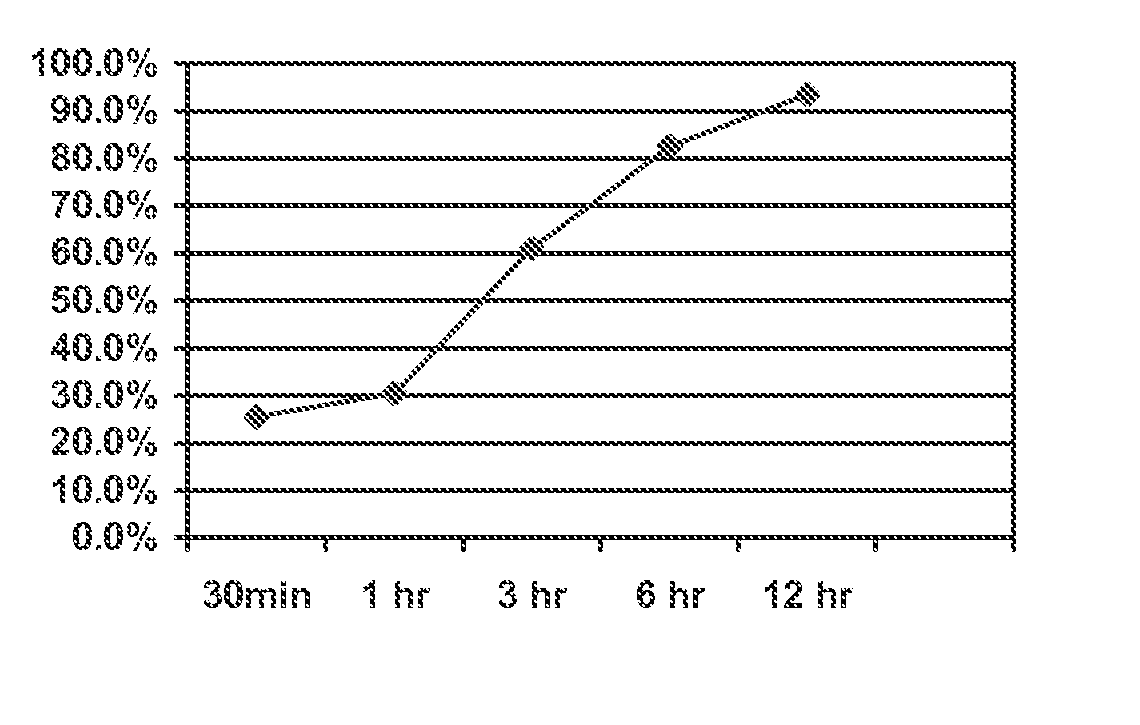Ion Exchange Resin Treated to Control Swelling
a technology of ion exchange resin and swelling, applied in the direction of dispersed delivery, synthetic polymeric active ingredients, drug compositions, etc., can solve the problem that none of them adequately addresses all of the problems in a single composition, and achieve the effect of sufficient loading tim
- Summary
- Abstract
- Description
- Claims
- Application Information
AI Technical Summary
Benefits of technology
Problems solved by technology
Method used
Image
Examples
example i
[0060]
Resin300 gDrug300 g70% Sorbitol250 mLPurified Water750 mL
[0061] In Example I, the water, sorbitol, drug and resin are slurried together and sufficient time is allowed for the drug to load onto the resin. When the loading operation is completed the components of the slurry are separated (e.g., filtered or centrifuged) into liquid and solid fractions. Because the sugar alcohol is highly water soluble most of the sugar alcohol remains in the aqueous phase, leaving about 4% sorbitol in the solids. The solids are not washed but are dried to yield material suitable for coating.
example ii
[0062]
Resin300.0 gDrug300.0 gSorbitol 7.5 gPurified Water992.5 mL
[0063] In Example II, the water, drug and resin are slurried together and sufficient time is allowed for the drug to load onto the resin. When the loading operation is completed the slurry is separated (e.g., filtered or centrifuged) into liquid and solid fractions. The liquid fraction is discarded. The solid fraction is not washed but is dried. Sorbitol is dissolved in 100 grams water, added to the dried drug resin complex and the drug resin complex is allowed to absorb the sorbitol solution. The treated resin may then be dried and coated.
[0064] To form the cationic exchange resin drug complex it is necessary to combine an ion exchange resin with one or more molecules, e.g., one or more ionic drug compounds. The adsorption of molecules to the surface of a resin is well known to persons of skill in the art. In addition, the ionic drug molecule may be attached to a linker that allows attachment of the drug to the ion e...
example iii
[0069]
Drug Resin Complex2000 gEthylcellulose 300 gEthyl acetate5700 g
[0070] The drug resin complex was placed in a fluid-bed coating apparatus and fluidized with intake air. The ethylcellulose was dissolved in the ethyl acetate and applied at a rate of about 20-25 grams per minute until 6000 grams had been applied. Fluidization was continued with the heated air for an additional ten minutes after termination of the application of the coating solution. Example IV is another water-permeable diffusion barrier coated drug resin complex that includes:
PUM
| Property | Measurement | Unit |
|---|---|---|
| time | aaaaa | aaaaa |
| weight | aaaaa | aaaaa |
| water-permeable | aaaaa | aaaaa |
Abstract
Description
Claims
Application Information
 Login to View More
Login to View More - R&D
- Intellectual Property
- Life Sciences
- Materials
- Tech Scout
- Unparalleled Data Quality
- Higher Quality Content
- 60% Fewer Hallucinations
Browse by: Latest US Patents, China's latest patents, Technical Efficacy Thesaurus, Application Domain, Technology Topic, Popular Technical Reports.
© 2025 PatSnap. All rights reserved.Legal|Privacy policy|Modern Slavery Act Transparency Statement|Sitemap|About US| Contact US: help@patsnap.com


